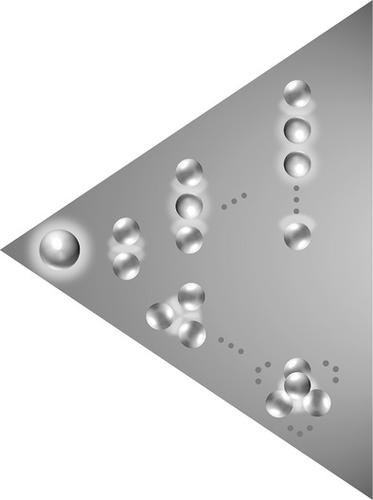当前位置:
X-MOL 学术
›
Adv. Opt. Mater.
›
论文详情
Our official English website, www.x-mol.net, welcomes your
feedback! (Note: you will need to create a separate account there.)
Fano Resonance in Artificial Photonic Molecules
Advanced Optical Materials ( IF 8.0 ) Pub Date : 2020-03-23 , DOI: 10.1002/adom.201902153 Guangtao Cao 1, 2 , Shaohua Dong 2, 3 , Lei‐Ming Zhou 2 , Qing Zhang 2 , Yan Deng 2 , Cong Wang 3 , Han Zhang 3 , Yang Chen 2 , Cheng‐Wei Qiu 2 , Xinke Liu 1
Advanced Optical Materials ( IF 8.0 ) Pub Date : 2020-03-23 , DOI: 10.1002/adom.201902153 Guangtao Cao 1, 2 , Shaohua Dong 2, 3 , Lei‐Ming Zhou 2 , Qing Zhang 2 , Yan Deng 2 , Cong Wang 3 , Han Zhang 3 , Yang Chen 2 , Cheng‐Wei Qiu 2 , Xinke Liu 1
Affiliation

|
The spectral signatures of chemical molecules are dependent on the hybridization of electronic states. The artificial photonic molecules formed by structured optical microcavities, exhibiting Fano features with sharp asymmetric line shape and strong field enhancement, hold various potential applications in sensors, optical switches, lasing spasers, optical diodes, etc. To design high‐performance photonic devices, it is of great importance to gain the formation and modulation mechanisms of Fano resonance in various artificial photonic molecules. This review is focused on the Fano resonance in artificial photonic molecules. It starts by discussing the properties of Fano resonance, followed by a detailed discussion of the coupled oscillator model and coupled mode theory that could reveal the underlying mechanisms. Then, different types of photonic molecules for realizing Fano resonance are presented, and several representative exciting applications are introduced. Finally, a summary and a brief outlook on challenges are discussed for Fano resonance in artificial photonic molecules.
中文翻译:

人造光子分子中的Fano共振
化学分子的光谱特征取决于电子态的杂交。由结构化的光学微腔形成的人造光子分子,具有清晰的非对称线形和增强的场效应的Fano特征,在传感器,光学开关,激光散布器,光电二极管等方面具有各种潜在的应用。要设计高性能的光子器件,它对于获得各种人工光子分子中的Fano共振的形成和调制机制而言,这一点至关重要。这篇综述的重点是人工光子分子中的Fano共振。首先讨论Fano共振的特性,然后详细讨论耦合振荡器模型和耦合模式理论,以揭示其潜在机理。然后,介绍了用于实现Fano共振的不同类型的光子分子,并介绍了几种具有代表性的令人兴奋的应用程序。最后,对人工光子分子中的Fano共振的挑战进行了总结和简要展望。
更新日期:2020-03-23
中文翻译:

人造光子分子中的Fano共振
化学分子的光谱特征取决于电子态的杂交。由结构化的光学微腔形成的人造光子分子,具有清晰的非对称线形和增强的场效应的Fano特征,在传感器,光学开关,激光散布器,光电二极管等方面具有各种潜在的应用。要设计高性能的光子器件,它对于获得各种人工光子分子中的Fano共振的形成和调制机制而言,这一点至关重要。这篇综述的重点是人工光子分子中的Fano共振。首先讨论Fano共振的特性,然后详细讨论耦合振荡器模型和耦合模式理论,以揭示其潜在机理。然后,介绍了用于实现Fano共振的不同类型的光子分子,并介绍了几种具有代表性的令人兴奋的应用程序。最后,对人工光子分子中的Fano共振的挑战进行了总结和简要展望。











































 京公网安备 11010802027423号
京公网安备 11010802027423号